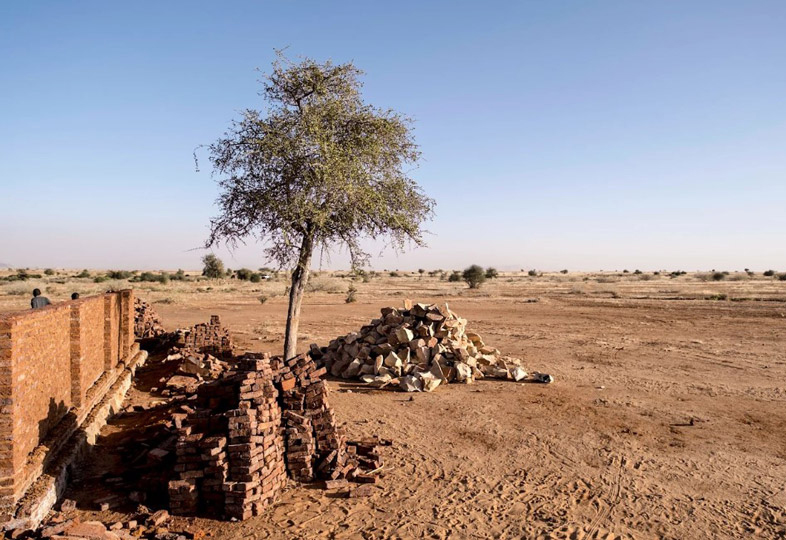The volunteers came to remind us of the old Sudanese saying, ‘one hand does not clap alone’, together we can achieve more. --Omer Ismail Abdalla, water management committee
For the people of El Sahel, a sleepy village in North Darfur, and eight surrounding communities, safe and easy water access has long been a challenge, and a source of health issues and conflict.
Located on the Sahara’s edge, rainfall is limited. Until recently the only reliable water source required a 6-8-hour walk, making collection a dangerous and time-consuming burden – mostly for women and children – with temperatures often exceeding 40°C.

For those spending the day fetching water, other challenges were evident – particularly disruption to school and essential household chores like collecting firewood, milling grain, and preparing food. Though donkeys are sometimes available, they are generally used by men for farming.
Besides distance, bouts of hygiene-related and water-borne illnesses were common, caused by polluted water or poor sanitation – a drastically increasing problem as COVID-19 spreads globally.
Water access has also served as a conflict flashpoint as competition for limited resources increases. And now, facing the impacts of a changing climate and its associated rainfall water issues, finding solutions for places like El Sahel is more critical than ever.
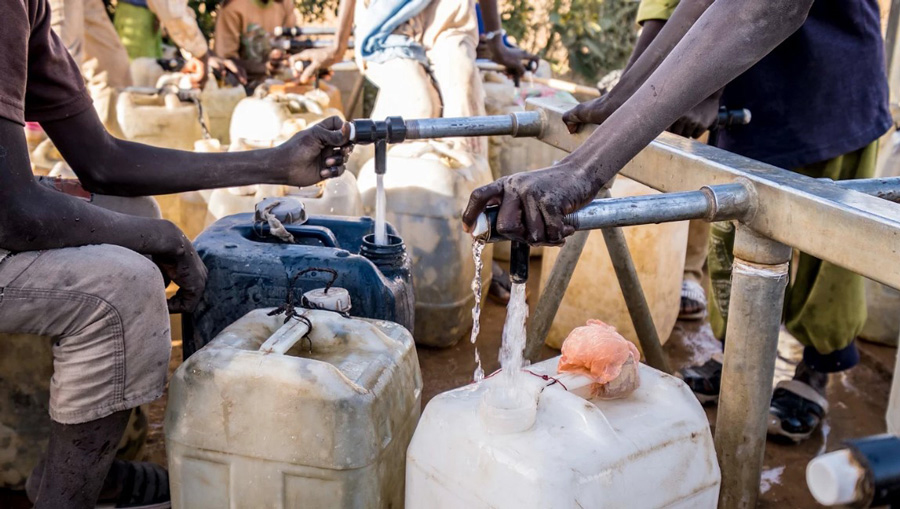
The challenge was straightforward – El Sahel has groundwater 69 meters below the surface – but lacked a well or borehole, or way to manage storage and distribution. Fortunately for the residents and those of eight neighbouring villages, this need had also been identified by two local UNDP-trained youth volunteers, part of almost 600 deployed across Darfur.
Equipped and deployed to support local community recovery, natural resource management, and peacebuilding, the volunteers worked with community leaders to understand local problems and needs. Prioritizing water access, together they successfully pitched a 'water yard' to provide clean and steady water supply to the area.
Under the supervision of Sudan’s Water, Environment and Sanitation Department, an engineering team drilled and constructed the yard – with a borehole, filters, taps, water tank, pump and generator – now providing 7,350 gallons of water per day.
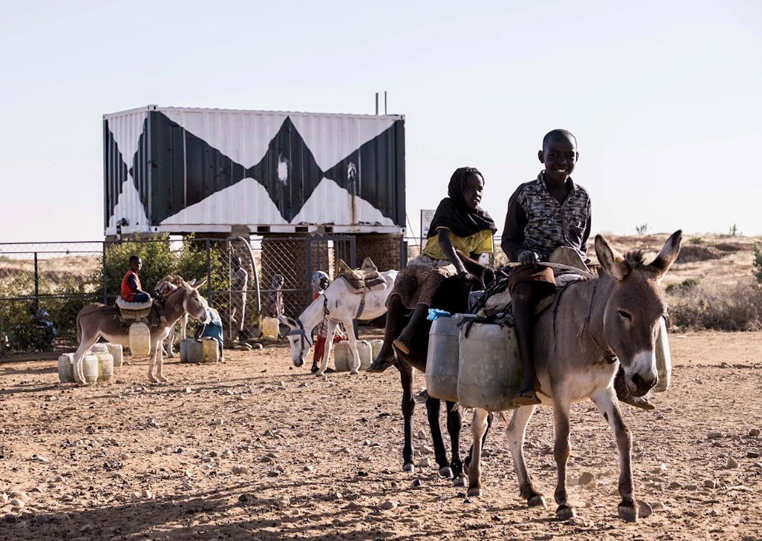
At a practical level, improved water access means better sanitation, and more readily available hand-washing – a critical first line of defense against COVID-19 – vital when health facilities are limited.
Now, children and women are spared the daily chore of hauling water. Children have more time for school and play, women have a clean source of water for their families, and the entire community has benefitted. --Kalthoum Abakar Abdulla Eltayeb, village beneficiary
She adds, "The water has become abundant and we can grow vegetables by our home, as well as sell them. When the volunteers asked us about our main priorities, we identified water and health first, then education. They helped with the construction of the water system first, then the classrooms."
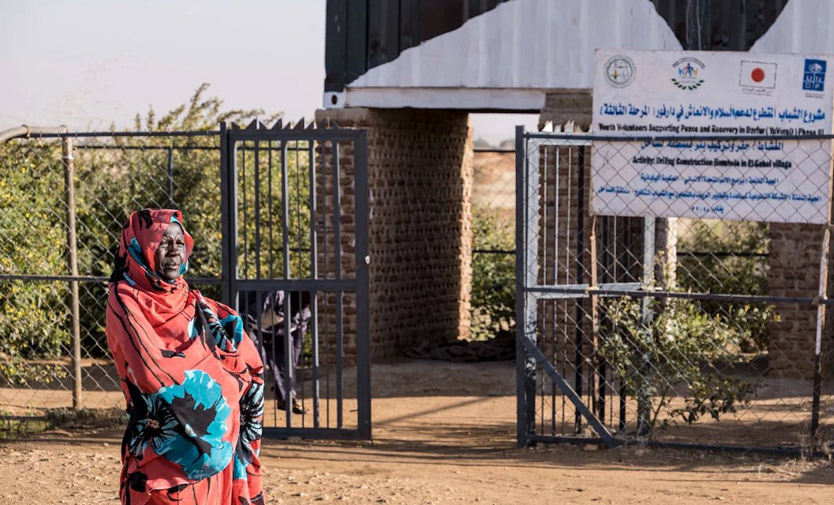
Since the system’s construction, a water committee has been established, including local women, who manage the resource, ensure equitable access, and make sure it operates safely and sustainably.
Although Omer and Kalthoum are the first to point out that the challenges facing the village remain significant, they are delighted with the results – from improved water access to better health, reduced tensions in the area to improved food security.
And, as just one of the 41 Darfur infrastructure projects created and managed by local youth volunteers to date, the impact of community-owned development and peacebuilding is clear – with more than 125,000 people benefiting from new water boreholes, markets, community centers, health centres and classroom blocks so far.
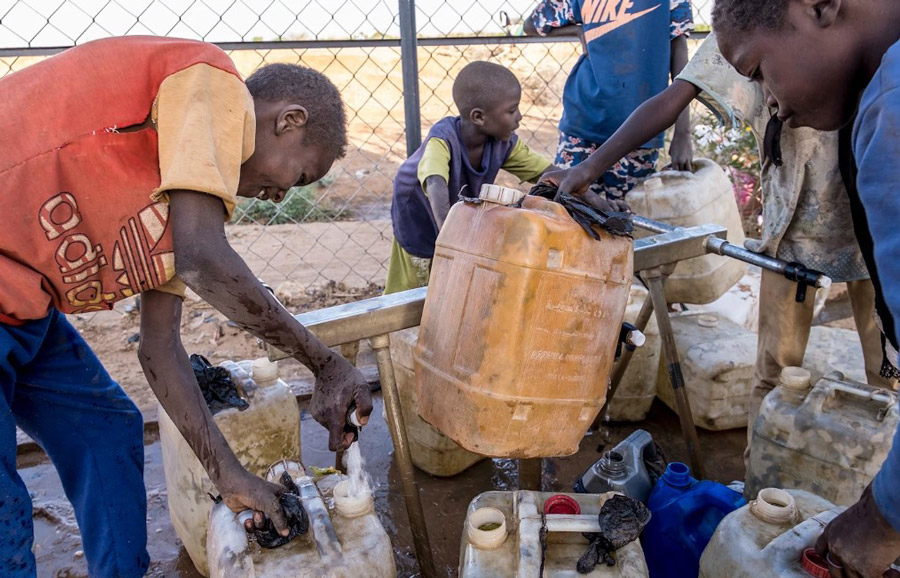
Another successful impact has been improving relations between different community groups – such as nomadic herders grazing livestock (pastoralists) and farmers growing crops (agriculturalists) – to help mitigate conflict. Omer Ismail Abdalla, a member of the water committee, describes how the water yard itself, and training by the volunteers, brought the two groups together and highlighted ways to better manage natural resources.
We are from the farming sector and previously there were clashes…herders used to just eat anything green in their way and this affected our capital greatly. However, after the construction of the water yard, we realized that we both could have benefits. The herders gain water for their cattle and we in turn get dairy produce from their cattle, making this arrangement an excellent one. --Omer Ismail Abdalla, member of the water committee
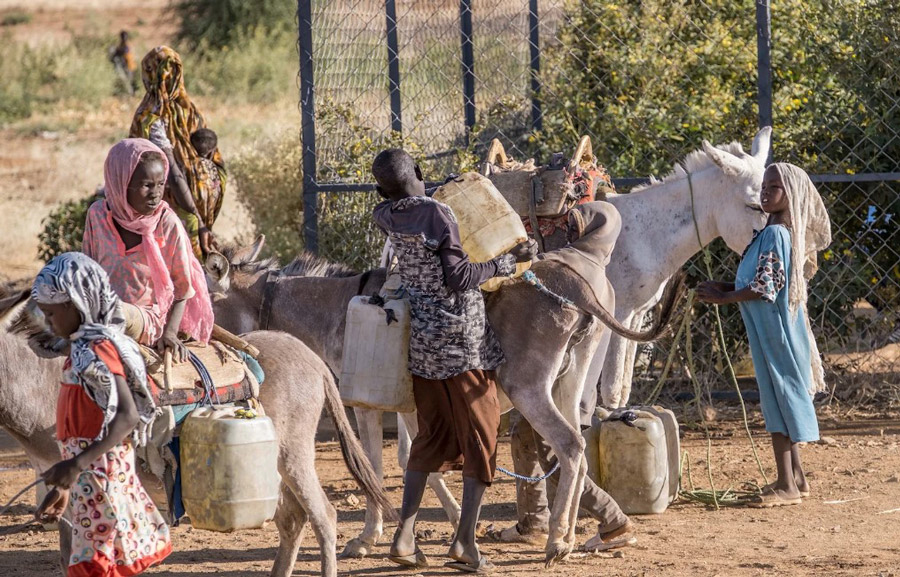
Key facts:
Youth volunteers in Darfur lead participatory analysis, prioritization, and management of projects like this water yard, in this case bringing improved water access, social cohesion, health and security improvements to the almost 10,000 residents of El Sahel and its eight surrounding communities.
Since 2012, the Youth Volunteers Supporting Peace and Recovery in Darfur project has empowered youth to play an active role in peace and recovery processes – via skill and capacity building, job creation, conflict resolution, community management training, sustainability and other avenues.
As a result 579 youth volunteers were trained, equipped and deployed to 172 communities across Darfur’s five states for nine-month periods, assisting 45,890 vulnerable community members (50.2 per cent women) through training and development support. The latter included 41 infrastructure projects like El Sahel’s new well; 13,000 people accessing micro-credits or emergency funds through 648 savings groups; support to 682 micro-enterprises; and the creation of 90 peace clubs.
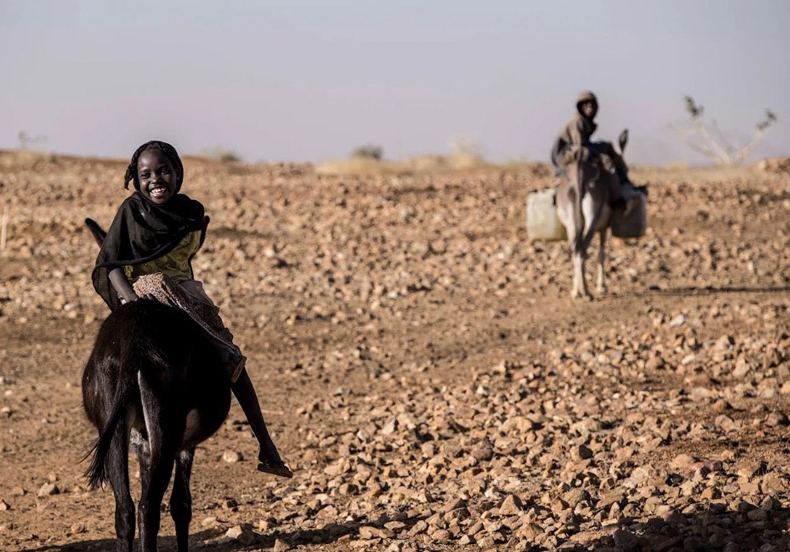
UNDP’s efforts in youth-led development in Darfur is made possible with generous support from the Republic of Korea, the Government of Japan, UNV and the Government of Sudan, in collaboration with Darfur’s Ministries of Finance and Social Affairs, and local peace centres.
Now in its fourth phase, the the Youth Volunteers Supporting Peace and Recovery in Darfur programme is designed to tackle youth unemployment in Darfur and use youth as agents of change in Darfur’s peace and recovery.
Its success has been made possible due to generous financial support from the Republic of Korea through the Korea International Cooperation Agency (KOICA), the Government of Japan and UNV.
